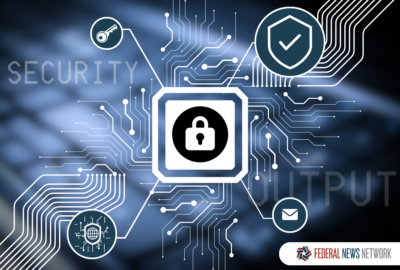DorobekINSIDER: Green government – and telework
I had the pleasure of moderating a panel last week… ostensibly on green IT, but it ended up being about the larger issue of green government. The program was...
I had the pleasure of moderating a panel last week… ostensibly on green IT, but it ended up being about the larger issue of green government.
The program was sponsored by the Java Team of the American Council on Technology and Industry Advisory Council’s Partners program, which is a marvelous development program designed to help government and industry understand each other better.
And we had a great line-up:
Jeff Eagan, Energy Department, who is on assignment at the White House reviewing the agency sustainability plans. I should note he is a 2010 Fed 100 winner.
Emile Monette, director of GSA’s Federal Technology Service’s sustainability division
Kimberly T. Nelson, Microsoft and former EPA CIO
Marian Van Pelt, a principal at ICF and a carbon inventory expert.
And we discussed Executive Order 13514: Federal Leadership in Environmental, Energy, and Economic Performance [PDF] — read more from the White House about EO 13514 here… and a WhiteHouse.gov blog post on the green initiative here.
The executive order essentially calls on agencies to cut energy use by 28 percent… and they were required to submit “sustainability plans” to the Office of Management and Budget by the begging of this month. (I understand all are in now.)
There were several issues that came out of our discussion.
One was that this just seems overwhelming. One CIO for one of the big agency departments asked, essentially, help me know what are the best things to do out there. Agencies — and agency CIOs — have scores of mandates on them… and most of them generally want to be as green as possible. That being said, the greening discussion became so broad that it became almost overwhelming.
The general response was…
1. Work with your sustainability officer… Each agency is required to appoint a chief sustainability officers. I can’t seem to find a list of those names, unfortunately, but the first recommendation was to find out who that person is and work with them.
2. Measure… The second was to come up with a plan for measuring what your organization’s energy footprint is… so you can then determine if you are having an impact.
3. Just do it… Start doing something… turning off computers at night… turn off lights in buildings… reduce your data centers… GSA Administrator Martha Johnson has actually taken this issue quite seriously. At recent conferences, GSA executives were prohibited from renting their own cars. Instead, GSA organized a bus to shuttle people where they needed to go. And, it was pointed out to me, GSA actually sought public input on its sustainability plan.
4. See helpful links below for other ideas.
The other big issue that was discussed was — ready for it — telework. I should note that this is now the third green focused panel that I have moderated — and it is the third time the panel has been dominated by telework issues. And again, people asked why the government seems to be so reluctant to institute telework — and why there isn’t more of a push for telework.
Last week on Federal News Radio 1500 AM’s Dorobek Insider, we spoke about telework — and a new FedScoop survey on the government’s attitudes towards telework [PDF]. The survey shows the government is still behind, but that attitudes are changing.
Anyway, during the discussion, there were a number of helpful sites mentioned… I promised I would round them up.
* The Federal Electronics Challenge: http://www.federalelectronicschallenge.net
The Federal Electronics Challenge (FEC) is a partnership program that encourages federal facilities and agencies to:
Purchase greener electronic products.
Reduce impacts of electronic products during use.
Manage obsolete electronics in an environmentally safe way.
* EPEAT: http://www.epeat.net
EPEAT is a system that helps purchasers evaluate, compare and select electronic products based on their environmental attributes. The system currently covers desktop and laptop computers, thin clients, workstations and computer monitors.
* Energy Department’s Federal Energy Management Program
The Energy Department’s Federal Energy Management Program’s (FEMP) mission is to facilitate the Federal Government’s implementation of sound, cost-effective energy management and investment practices to enhance the nation’s energy security and environmental stewardship.
Other resources from Federal News Radio 1500 AM:
* For Earth Day, we spoke to Michelle Moore, Federal Environmental Executive in the Executive Office of the President. She is the person who is leading the oversight of the agency sustainability plans. Hear that conversation here.
* Somebody who just did it: Want to have hope in what you can do… and in young people… Last week, I got to talk to a 29-year-old woman who is making a difference. Saskia van Gendt is a resource conservation specialist at the EPA… and she is working in the field of “climaterials” — essentially the greening of all the materials to make buildings. And she launched a contest — the Lifecycle Building Challenge, a yearly online competition that recognizes cutting-edge building design and challenges students, architects and builders to reduce the environmental impact of buildings. This ‘just do it’ attitude scored her a place as a finalist for the Service to America Medals — the SAMMIES. Hear Ms. van Gendt talk about what she did here.
* Beneath the Green Dome: My colleague Amy Morris did a series looking at the greening of the Capitol. Find that series here.
Tomorrow… is there a better way to do sustainability plans?
Copyright © 2025 Federal News Network. All rights reserved. This website is not intended for users located within the European Economic Area.





